Description
The complete set of this panoramic entitled “Paysages pittoresques” includes 30 color-printed strips. The original design was created by Manufacture DUFOUR in Paris around 1832, then republished in the second half of the 19th century by Desfossé & Karth.
The motifs were printed in color on a woodblock, with the exception of the backgrounds, which were hand-brushed to achieve the subtle gradation of the skies.
-The panels shown (23 to 30) depict a cavalcade of Arab riders, a French camp with a tent topped by a Gallic rooster, and a few deciduous trees revealing the beginnings of a Norman house (the latter motif provides a link with the very first panel of the panoramic, depicting a view of the Normandy coast).
-The motif is printed mainly on the lower part of the strip, so that the eye meets the scenes “naturally”, as the wallpapers are placed above the supporting furniture, about one metre above the floor. To get around the difficulty of connecting one wallpaper to another, the designer has ensured continuity of horizontal reading by a succession of landscapes with scenes of people scrolling past in the foreground, and by seascapes in the background that unify the composition.
-Perspective plays an important role in the rhythm of the landscape. For this reason, panoramic artists use a number of techniques to “punch holes” in the wall surface, to create depth, as in this case with the staggered planes and the stretches of sand that go on ad infinitum. In addition, the artist has set up separating motifs to delimit the different regions: for example, the ditch where the Arab horsemen ride separates the Arab camp from the French camp.
-Vegetation also plays an important role. It gives rhythm to the composition without breaking continuity, and contributes to the discourse as it evolves from temperate deciduous trees to oriental palms and Mediterranean umbrella pines.
-These panoramic wallpaper strips are truly museum collectors’ items, as the available corpus is very small. This scarcity, intimately linked to the nature of the papers and the fact that they had to respond to changing fashions while being glued to wall surfaces, is easily explained.
Concerning this “Paysage pittoresques” panorama in French public collections:
strips 3 to 4 are held at the Musée de Bretagne (Rennes), inv: 979.0053.1
a color lithographic model by Joseph Dufour (1832) at MAD Paris, inv. 51656/6A
a black-and-white advertising lithograph of strips 16 to 30, published by CLERC MARGERIDON et Cie, fabricants de Papiers Peints, is held at MAD Paris, inv. 51656/6B.
-Both Dufour and Zuber were pioneers in the design and production of panoramas in the 19th century.

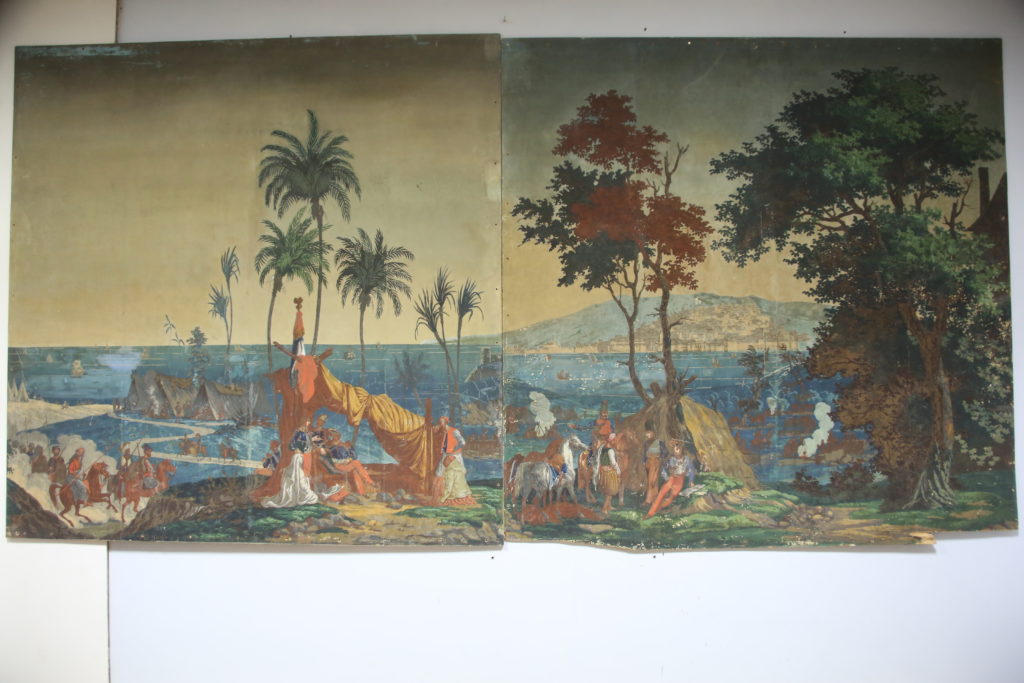
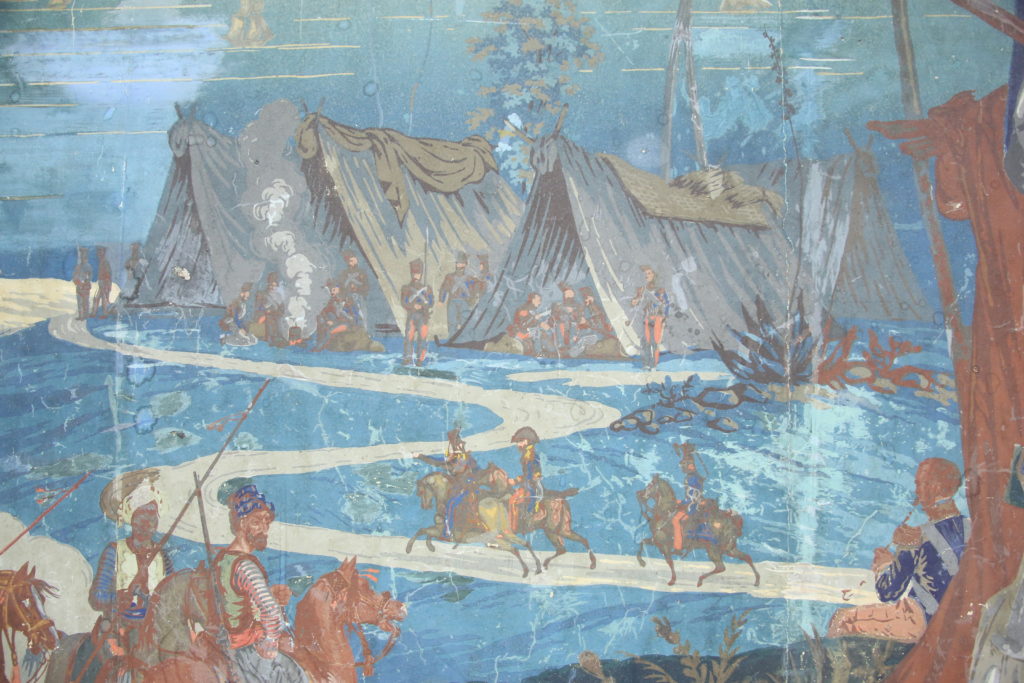
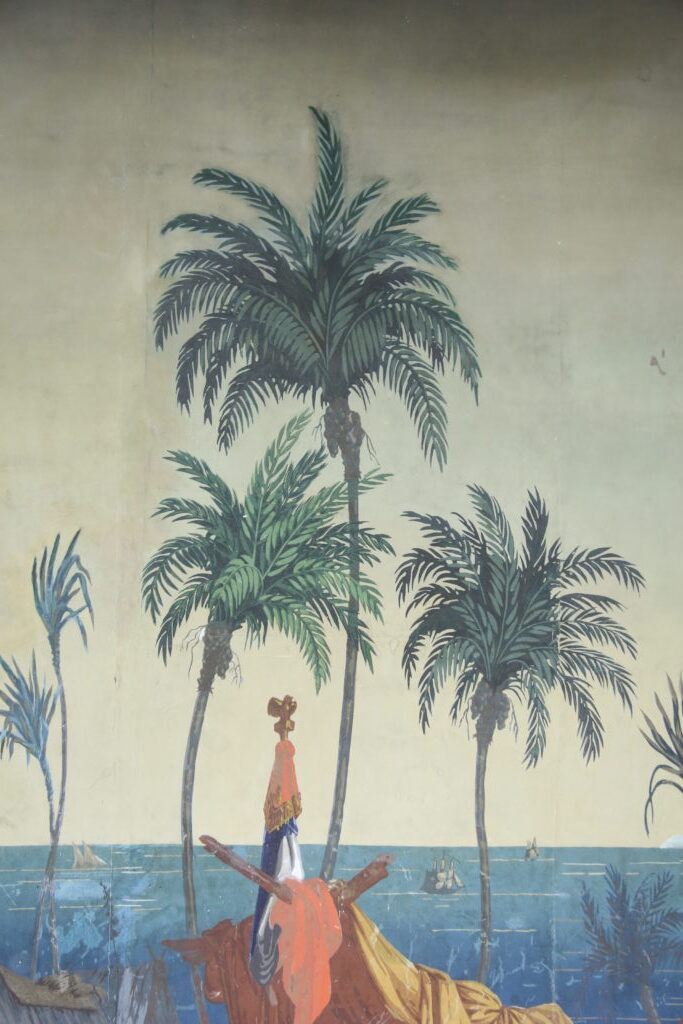
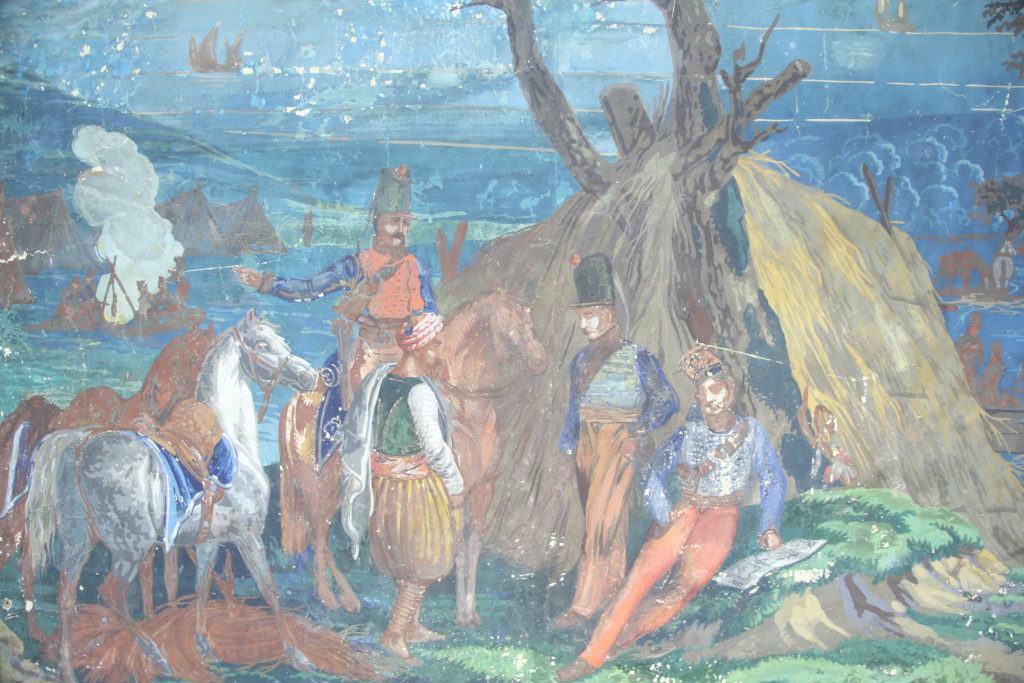

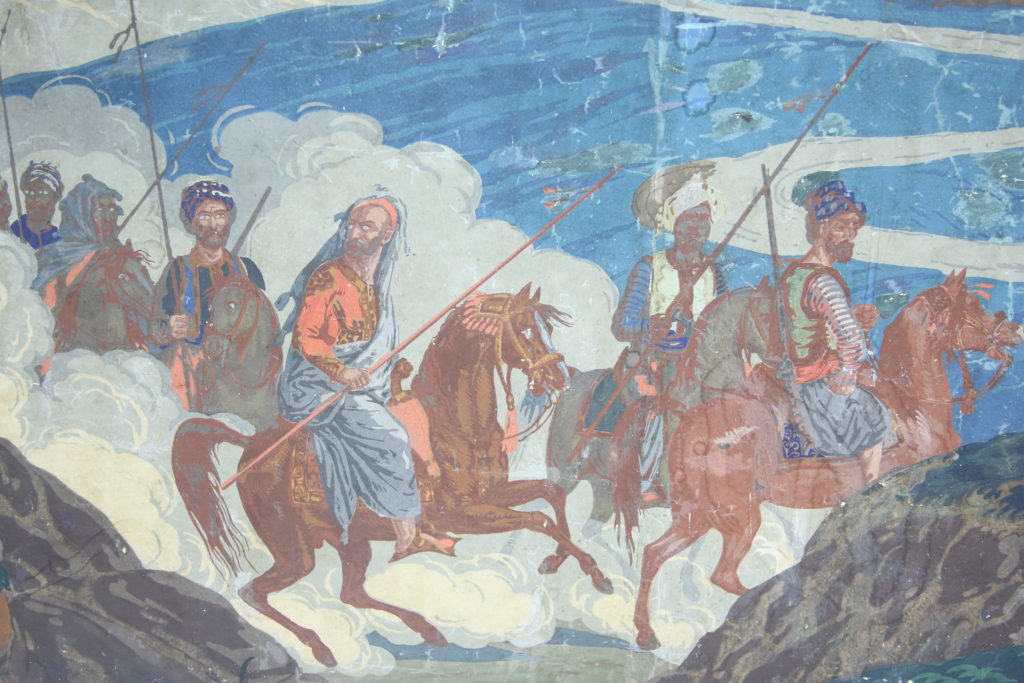
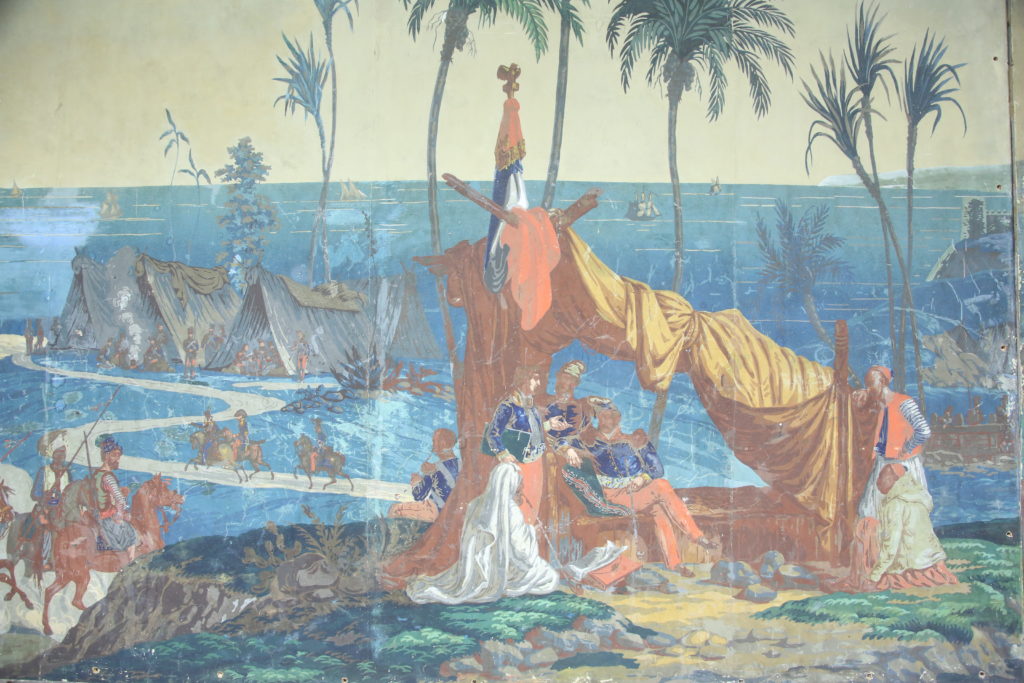
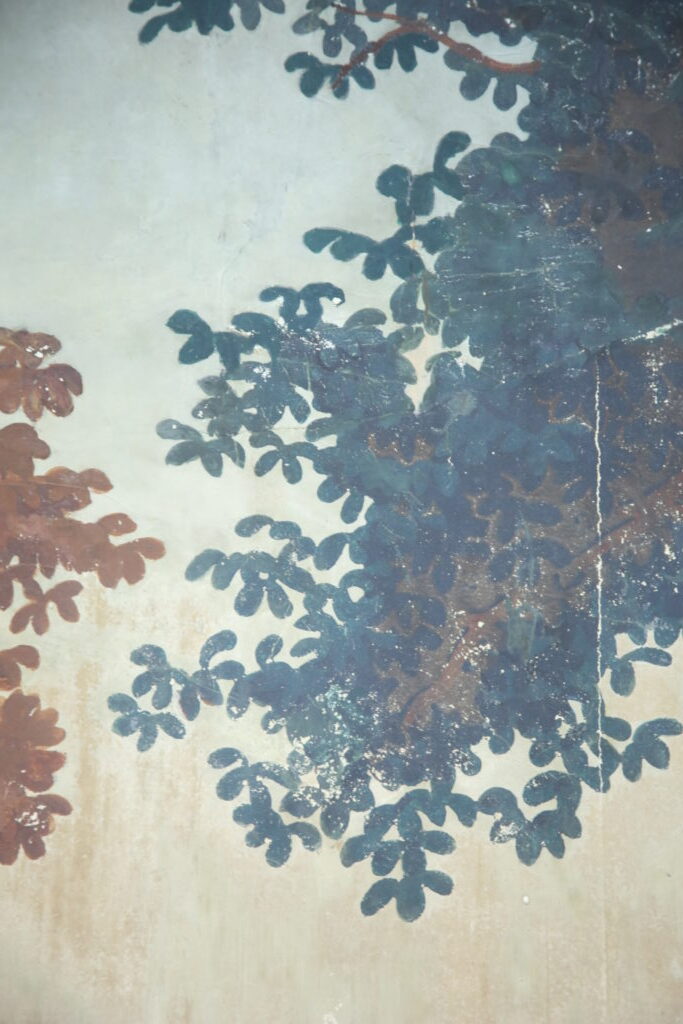
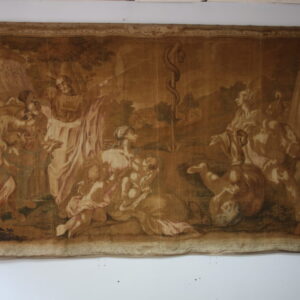
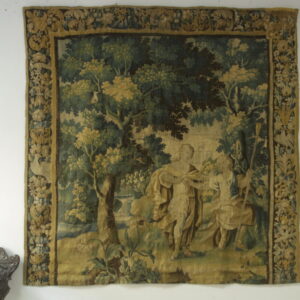
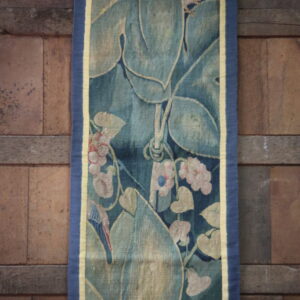
Reviews
There are no reviews yet.